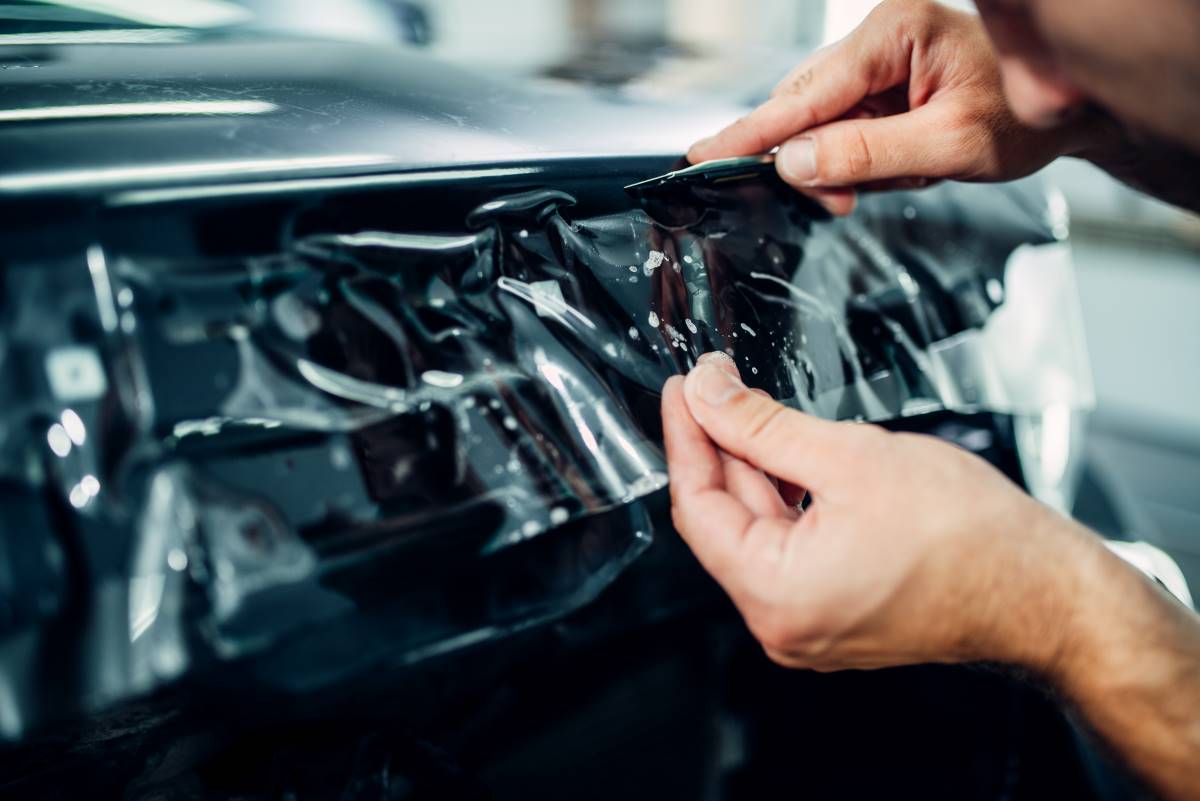Paint Protection Film (PPF) Coating for Cars: Meaning, Importance and Build

Regardless of the car that you own, you will always want your car to look like new and protect it from every damage. With PPF coating, you can care for your vehicle and keep the car paint safe from flying rocks and debris from the road.
Keep reading to know more about paint protection films, their working, and why are they crucial.
What Is a Paint Protection Film Coating for Cars?
The paint protection film is a product that will help you protect the car paint and protect it from scuffs, scratches, and stone chips. If your car is used for regular purposes, it is bound to undergo natural wear and tear.
How Does a Paint Protection Film Work?
Paint Protection Films are applied over automotive paints to protect them from external shocks and contaminants. Automotive paints are not very flexible, which results in cracking up and chipping away. Once your car starts degrading, the paint will never return to its original state.
The urethane present in PPF protects the car paint by absorbing some of the impacts and spreading it wider in appropriate amounts. However, being porous, the urethane will trap microscopic particles and cause the film's colour to fade. So, take note of that as well!
What Is the Cost of Paint Protection Films?
In general, the whole vehicle wrapping costs about ₹4,00,000 to ₹8,00,000 and is hell expensive. This is the reason why some people only go for specific parts of their car that are prone to damage.
Everyone is aware that the bumper is the most affected part in a car, and wrapping it will cost you near ₹33,000-₹40,000 as it has a complex shape.
What Are the Factors Affecting the Cost of Paint Protection Films?
It is not advisable for cheaper and lower-budget cars as this process is quite expensive. Paint protection film coating is not DIY- you need professionals to install it on your car.
The following factors guide the cost of PPF:
- Quality of the Product: Not all products have the same quality. Better ones cost more.
- Fees of the Installer: Every installer does not acquire the same skill. So, the experienced ones are going to charge you more when compared to the rookies.
- Surface Area: The surface area will mainly decide how many labourers are and how much material is needed for the job.
- The complexity of the surface: Edges and creases will make it difficult to wrap around and will thereby add up to your existing bill.
Advantages and Disadvantages of Paint Protection Films
Before you go running into the market to buy your PPF, we want to have a look at the benefits of PPF on cars along with the detriments associated:
|
Advantages |
Disadvantages |
|
Preserve your paint from scratches and other contaminants |
Expensive |
|
Protection against organic acids such as bird crap, tree sap, etc. |
If you change cars often, there is no benefit |
|
Long-term protection for up to 10 years |
Cheap film deteriorates sooner than expected |
How to Install Paint Protection Films?
PPF is a solid thing with a thickness of nearly 6-10 mils, and fixing it on complex surfaces like a car requires thorough skill. However, you can still get your head around the installation process to make better decisions and understand it when happening in front of you.
- Wash and Decontamination: Your car is washed thoroughly with various chemical products to decontaminate it.
- Paint Correction: After washing it properly, the next step is paint correction. A one-time paint correction will cover up any defects or scratches that your car has gone through.
- Film Installation: Finally, it’s time to fix the film. It looks like a sheet that is effectively trimmed into the shapes and sizes of body panels.
- Curing and Coating: While primary adhesion is seen within 30 minutes, full adhesion might take up to 2-3 days. Keeping the car at the during this whole time is advisable.
You can wash and wax the car after a few days while the curing process continues for the next 30-45 days. Once the paint protection film gets cured totally, you can now opt for other car coatings such as ceramic coating or sealants.
Can Paint Protection Film and Ceramic Coating Be Used Together?
The Paint Protection film is basically a clear film that adheres to your cars and protects them from dust, small dings, and debris. It was originally developed for the military to protect their vehicles, such as tanks and helicopters. Ceramic coating, on the other hand, is a chemical that is responsible for creating a water-repelling layer of protection.
PPF and Ceramic coating are paired together to give cars the ultimate protection from harmful UV rays. The UV rays are responsible for the overtime degradation of the paint protection film of your car, which eventually results in cracking, yellowing, and peeling. Applying ceramic coating over PPF prolongs its lifespan as well.
How Are Paint Protection Films Different from Vinyl Wraps?
As far as PPF and vinyl wraps are concerned, both are polymer films used to protect the exteriors of a vehicle. While the vinyl wrap is PVC, PPF is made of polyurethane. However, vinyl wraps can not be when the car has to undergo some really tough roads as it provides marginal protection with a much thinner covering.
PPF, on the other hand, is much thicker and can be trusted for long-term protection. Both the process amount to almost the same value. The main difference between them is that vinyl wraps are done for the whole car, but PPFs can be done partially according to your preference.


















